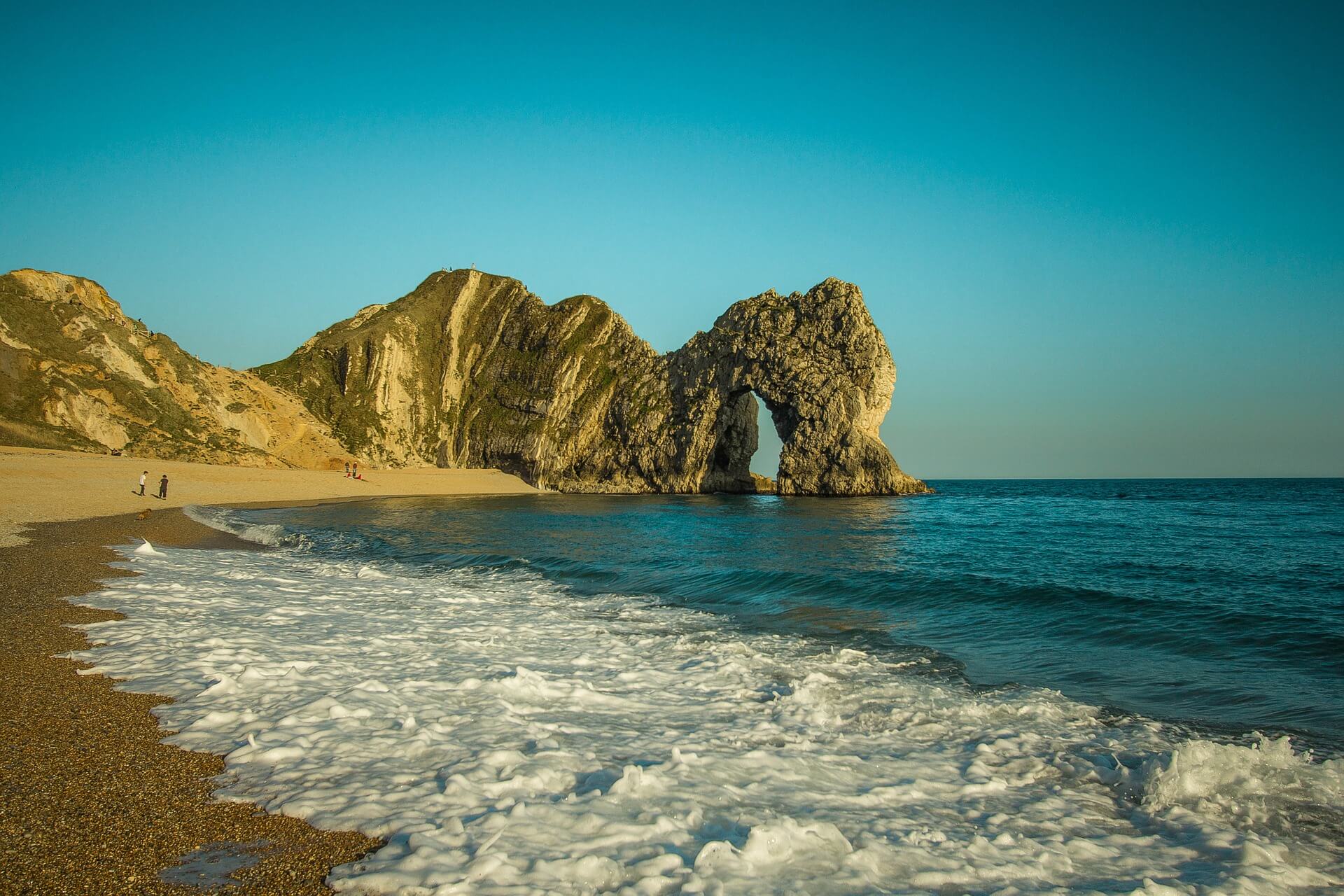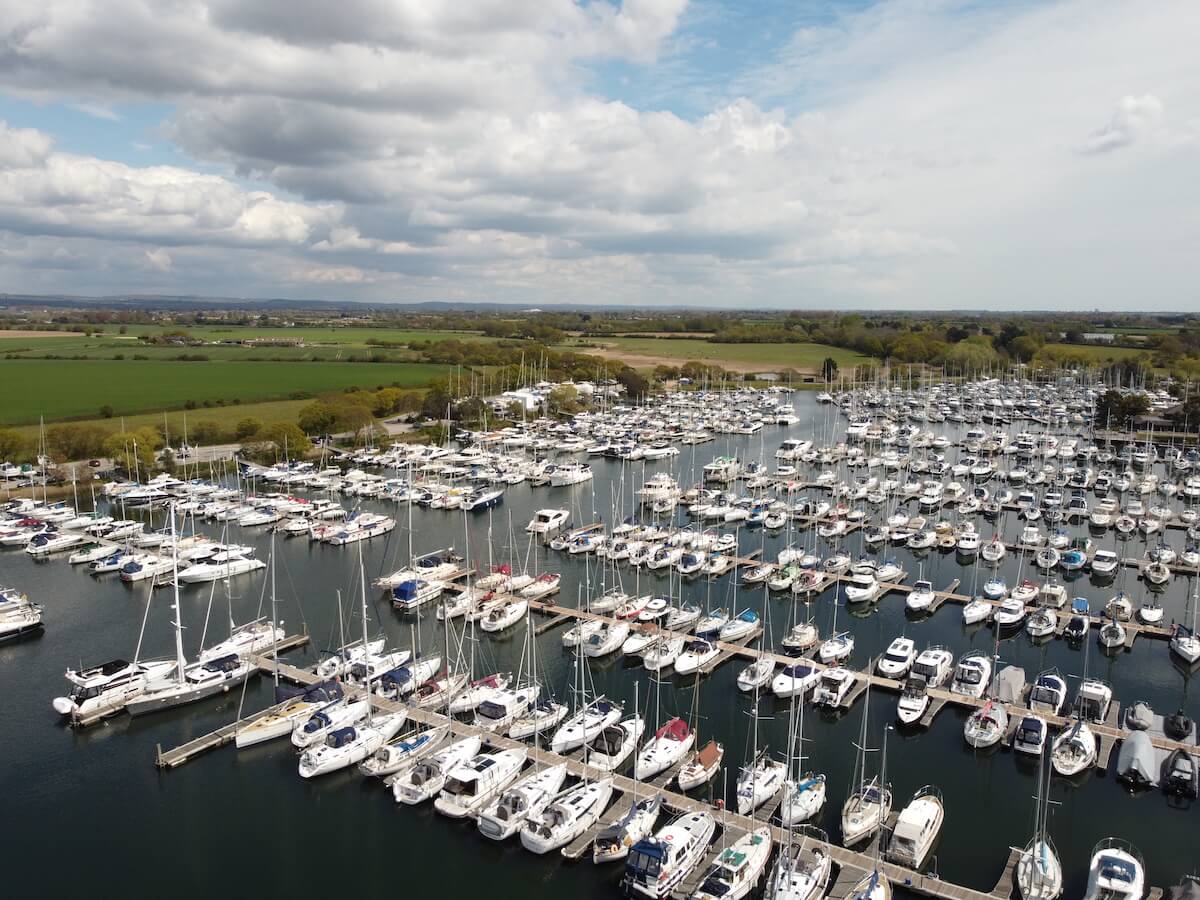13 Great Tips You NEED for Walking the South Downs Way in 2024
Are you planning on walking the South Downs Way this summer? We’ve enlisted the help of Matt Walk Wild to reveal everything you need to know to successfully walk from Winchester to Eastbourne, and enjoy it!

Walking the South Downs Way isn’t a route to be taken lightly.
The South Downs Way is a 100-mile walking path spanning from Winchester, the old Saxon capital of England, to Eastbourne, a Victorian-era seaside resort. The trail follows chalk ridges and quilted farmer’s fields through the South Downs National Park. It’s considered as one of the most accessible long-distance walking trails in England, and showcases the magnificent countryside of Hampshire and Sussex.
The South Downs Way route is fairly straightforward, and well signposted, but if you’re going for it, then you want to be prepared. Outdoor adventure traveller (and friend of the South Downs Way) Matt Walk Wild is here to give you an insight into what you need to know before you start the trail.
Top tips for Walking the South Downs Way
Don’t walk the South Downs Way without reading these tips first!
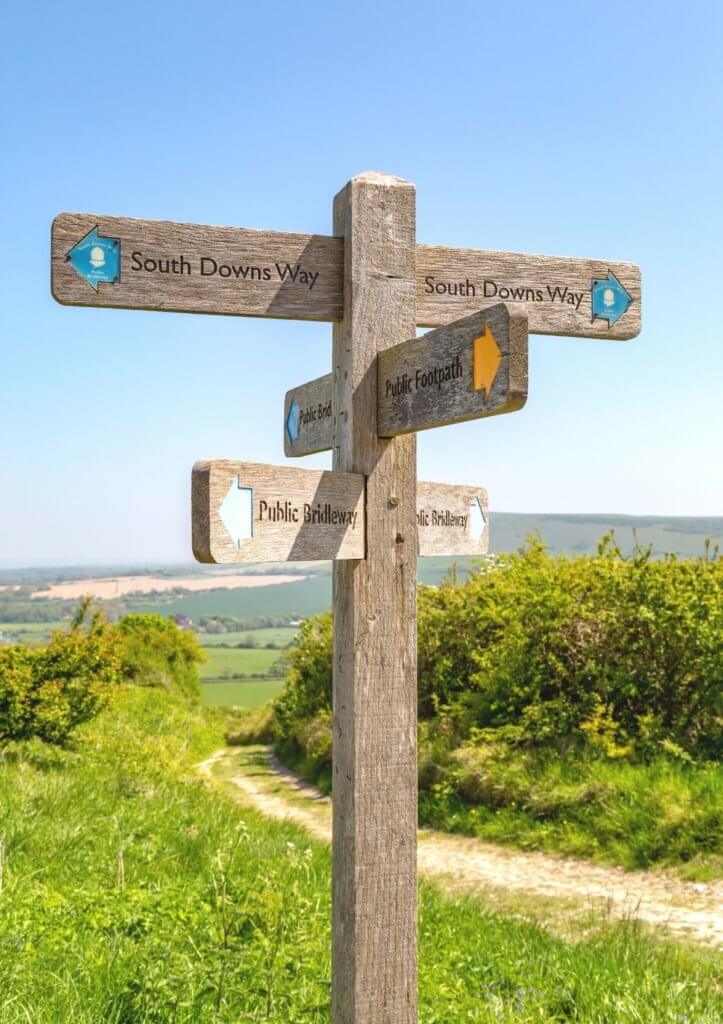
1. Few facts about walking the South Downs Way
The South Downs Way is one of the most popular National Trail walking routes in England. The South Downs Way is 100 miles and runs between Winchester and Eastbourne through the South Downs National Park. It’s a pretty route, and also one of the easiest. It’s especially popular during the summer thanks to those stunning coastal views.
How long will it take to walk the South Downs Way?
8-9 days
How far is it to walk the South Downs Way?
12-15 miles a day
When’s the best time of year to walk the South Downs Way?
Take a punt between April and October for the best weather to walk the South Downs Way, although August is pretty rainy these days. If you can leave your decision to the last minute, or at least the last hour, then walking the South Downs Way is a lot prettier in the sun!
How hard is it to walk the South Downs Way?
Manageable with a flat terrain, until you get to the coastal section with its hills and epic views. Make sure you’ve got great COMFY walking boots though!
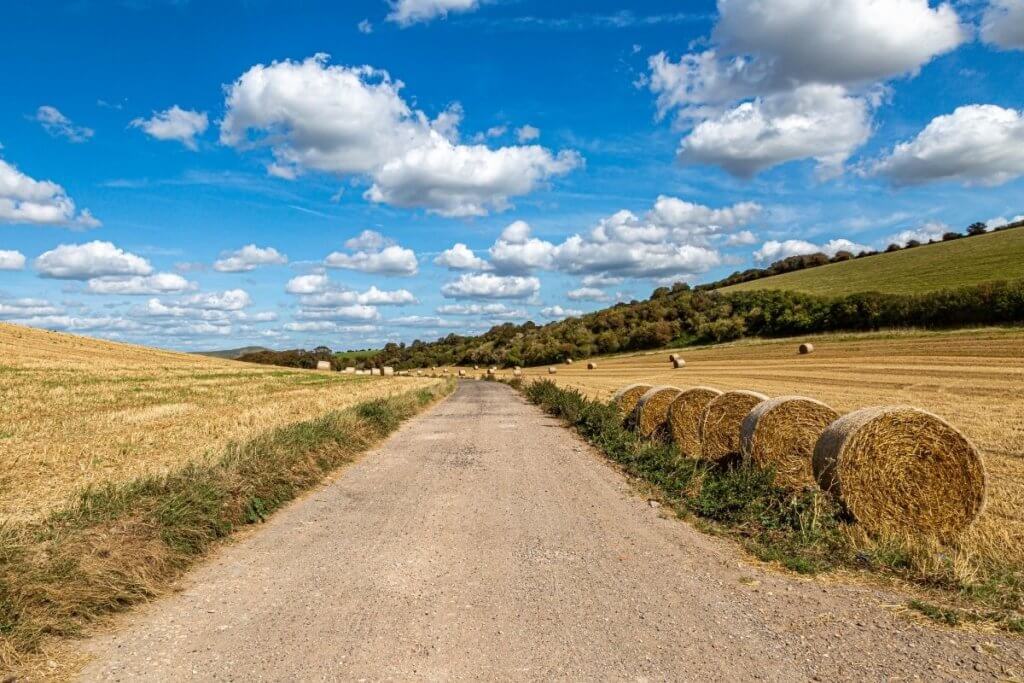
2. Best direction to walk the South Downs Way
The South Downs Way stretches horizontally, from west to east, across England. It has the unique feature of beginning inland, amongst lowland pastures and meadows before tracking towards the coast and finishing at the towering limestone cliffs of the Seven Sisters.
It’s possible to walk the trail in both directions but hiking from west to east allows you to save the most impressive views for last. It means you are walking towards the coast. A shimmer of the English Channel will grow before you as you wind along the grassy bluffs towards the beach.
The prevailing wind also blows from west to east and it’s easier to walk with the wind at your back. That way, if there is any wind or rain, which you can usually count on in England, it will be behind you rather than strike you face on!
3. Best day trips along the South Downs Way
If you’re looking to cut down the route, into more easily manageable South Downs Way walks, then here’s what you need to do.
Aside from the trailheads at Winchester and Eastbourne, there are only two train stations along the walking path at Amberley and Southease. So the best way to access the National Park is by car. Many of the hiking hotspots have car parks they just require a bit of driving along winding country roads to get there!
There are bus routes, but you’re going to have to be organised to make those specific timings.
One of the most revered areas along the South Downs Way is Beachy Head. Walking along the white cliffs of the Seven Sisters is a perfect way to spend a sunny day – just don’t walk too close to those crumbling edges.
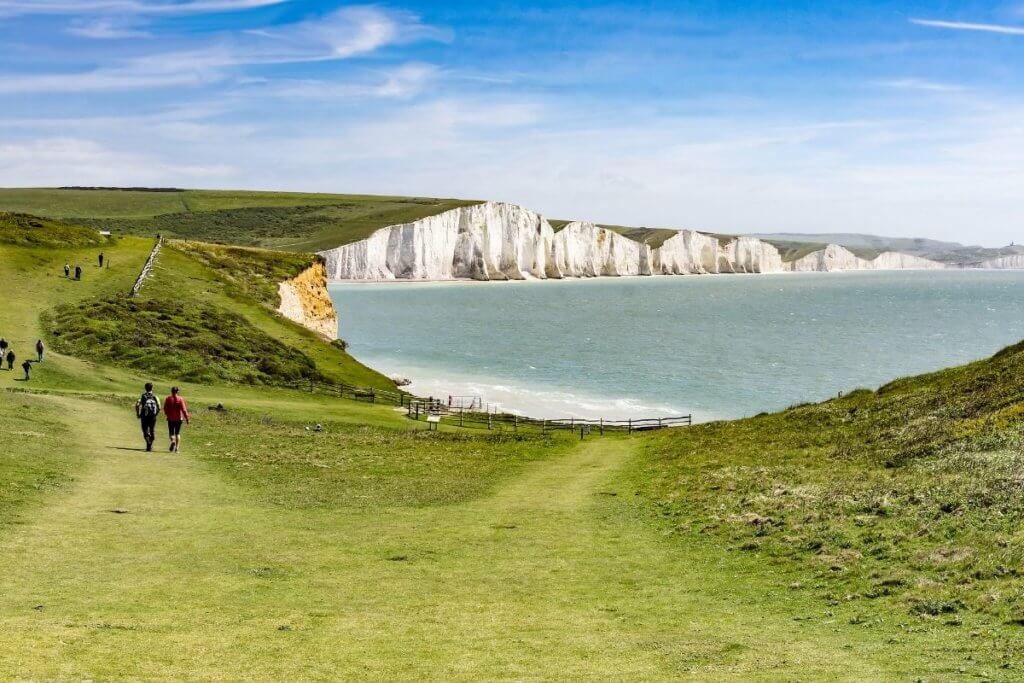
Though only the start of the trail, Winchester is a city well worth visiting. Its historic Cathedral and College are an icon of English heritage. Stroll down the cobbled backroads and experience the former capital city of King Alfred during the Saxon conquest.
Some other fantastic areas along the trail for shorter day trips are the Devils’ Dyke, Queen Elizabeth Country Park, and Harting Down.
You can walk small parts of the South Downs Way quite easily, like our editor Vicky did when she went hiking with her baby in the South Downs. There are also some great Forest walks in the South Downs too.
4. Best pubs & cafes on the South Downs Way
Hampshire and Sussex are home to a wealth of organic produce. Local food fills the menus of restaurants and cafes throughout the South Downs National Park. With so many old settlements, several dating back to the 11th century, the pubs and inns are some of England’s most charming. Stone floors, cask ales on tap, roaring fireplaces, and wonky oak crossbeams are just a sample of the features you’ll likely encounter.
Alfie’s is a particularly popular pub for locals in Winchester. If you’re looking for a more romantic evening, The Chesil Rectory is a quainter option with excellent food. Down the road is The Black Rat restaurant (don’t be put off by the name, the food is wonderful) and its counterpart pub, The Black Boy.
Farther east along the trail you’ll walk right past The Wildflour Café, situated on the National Trust site at Saddlescombe Farm. There’s also the George Inn or any one of the numerous pubs in Alfriston. If you want dinner with a view, hold off until you reach the end of the trail to visit the Beachy Head Hotel outside Eastbourne.
Be prepared for some great food when you walk the South Downs Way!
5. Best views on the South Downs Way
The South Downs Way isn’t a particularly high-elevation hike, but that doesn’t mean there aren’t great views. In fact, due to the low-lying land surrounding the hillside, the horizon seems to go on for miles.

Butser Hill is the highest point along the trail at 270 metres. It looks across to the forests of Queen Elizabeth Park in Hampshire, but it’s framed by the A3 which can be a little noisy at times. For a more remote viewpoint in Hampshire, try Old Winchester Hill. One of our favourite walks in Hampshire.
One of the best viewpoints in Sussex is from Firle Beacon. From this position, you can see along the coastal plain to where the beach meets the English Channel. You can also see inland to the town of Lewes and its surrounding countryside. Any of the views from Cuckmere Haven and the Seven Sisters trail in East Sussex are also worth admiring!
6. Key sites on the South Downs Way
An immensely popular site on the South Downs Way is the Beachy Head Lighthouse. The red and white structure set down in the waves is something of an icon for the trail and is not to be missed.

Another unique feature of the South Downs Way, and often overlooked, are the Devil’s Jumps. These mounds of earth are actually Bronze Age Barrows where important figures were buried around 3,500 years ago.
Most people who walk the South Downs Way will want to get that iconic shot of the Lighthouse!
7. Best wildlife on the South Downs Way
The wildlife along the South Downs Way is wonderful. Deer, pheasants, sheep, grouse, and songbirds all make appearances along the trail. Keep your eyes on the skies for the forked tail of a red kit. These predatory birds, once endangered, have enjoyed a successful reintroduction to the downs where they use the coastal updrafts to glide over the hills in search of prey.
8. Tips for navigating the South Downs Way
The South Downs Way is a monitored National Trail. It is consistently maintained and looked after to ensure walkers don’t get lost! The paths are clearly signposted with directions and distances to aid navigation.
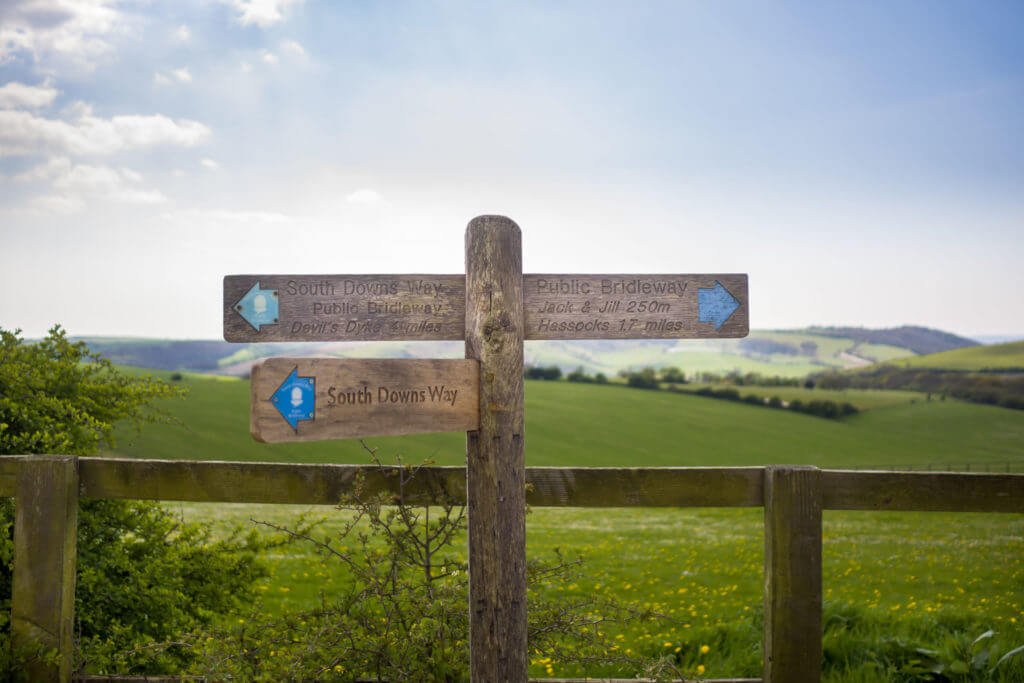
The symbol for a National Trails walking path is an acorn. You will often find this emblem on trees, gates, and signposts indicating the direction you need to walk. Effectively, you can forego the use of maps and simply use acorns and signposts to guide you along the route!
9. Snacks & water on the South Downs Way
Some sections of the trail run for 5-7 miles along a ridge without stopping off at any settlements. When the trail does reconnect with a road, it can then be another couple of miles to reach a town or village that contains any shops.
It’s a good idea to bring snacks with you and to top up your water wherever possible. Fortunately, there are several public drinking taps along the walking path. They’re sometimes tacked onto the edge of a farm or beneath a barn but they’re never far from the edge of the trail.
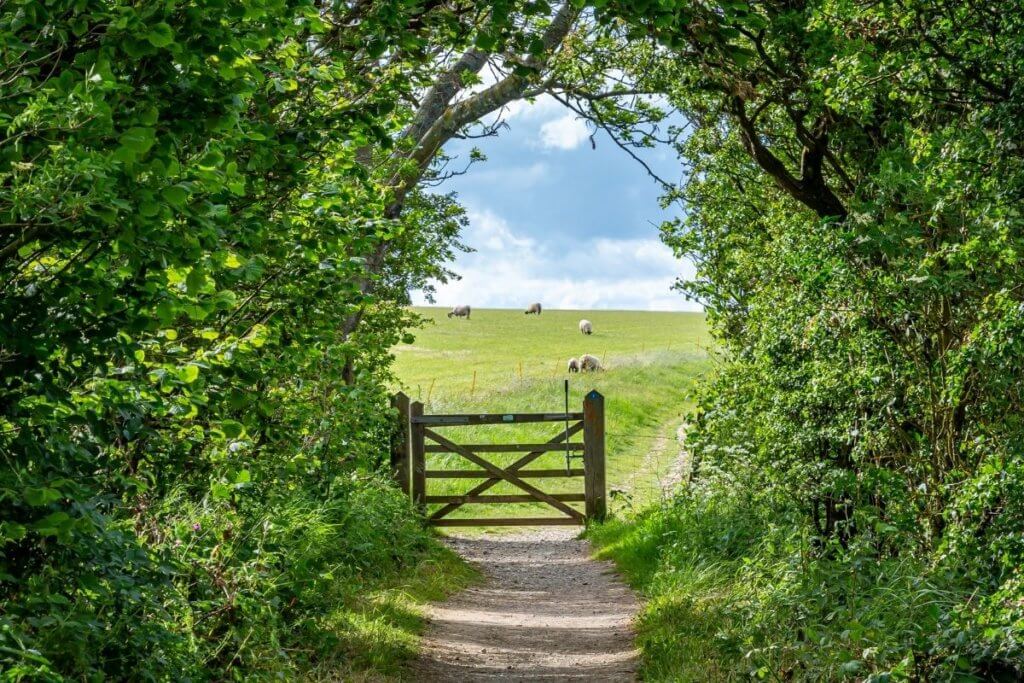
10. Cycling the South Downs Way
If you don’t want to walk the South Downs Way, and fancy cycling it instead, that’s absolutely encouraged. There’s loads of great information on cycling the South Downs Way here.
“When cycling the South Downs Way, the typical duration can range from 2-5 days depending on how often you cycle. For those with a high level of fitness, 2-3 days will be ideal for anyone who is short on time. For those wanting to explore the area of the South Downs Way, you can choose to cycle slightly less miles in a day and take your time to visit the beautiful countryside around you. You may also want to take days off so you can plan accordingly to length the route to your needs.“
southdownsway.org
11. Camping on the South Downs Way
If you plan to go camping in the South Downs to explore the route at sunrise and sunset, there are a range of options. Wild camping on the route is tolerated, but make sure you do your research as to where exactly.
There are also some great campsites on the South Downs Way to choose from to, starting at around £15 per night.
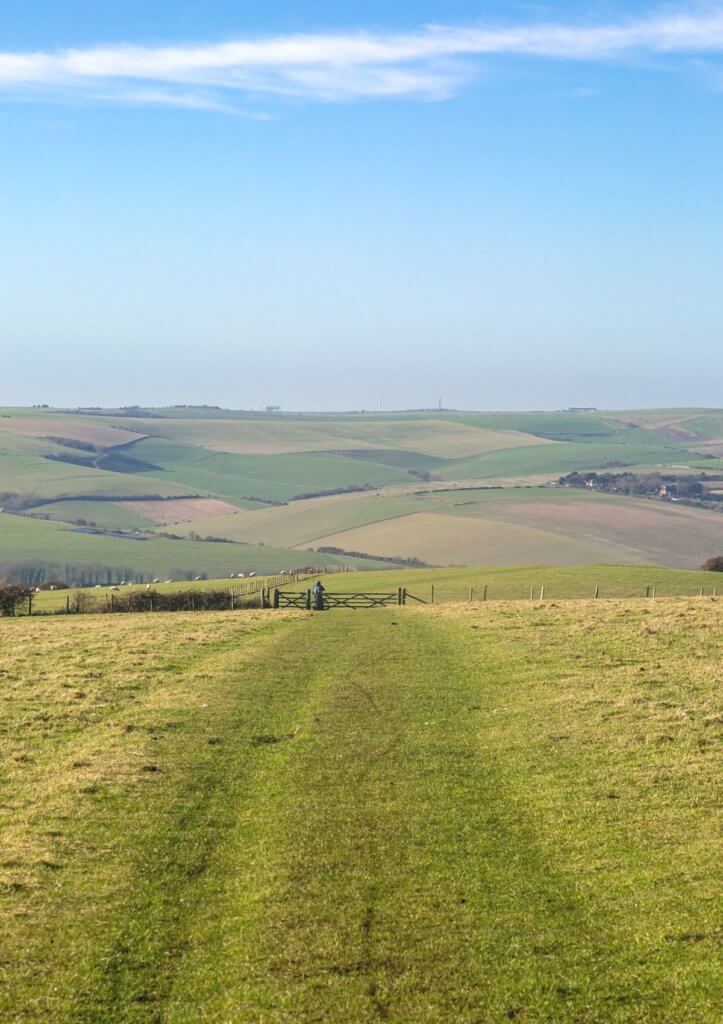
12. Packing for the South Downs Way
The Cicerone South Downs Way guide book or the Trailblazer Guide will help you follow the route. Or just use your phone.
Make sure you take a battery pack. You’ll be using your phone for photos, videos, navigation and making pub reservations so you need to ensure you always have battery.
Hiking poles will help with the terrain.
Take a comfortable and well-fitting backpack too.
You’ll need to be prepared for all weathers if you’re walking the South Downs Way – bring a rain jacket!
Click for more hiking packing tips here.
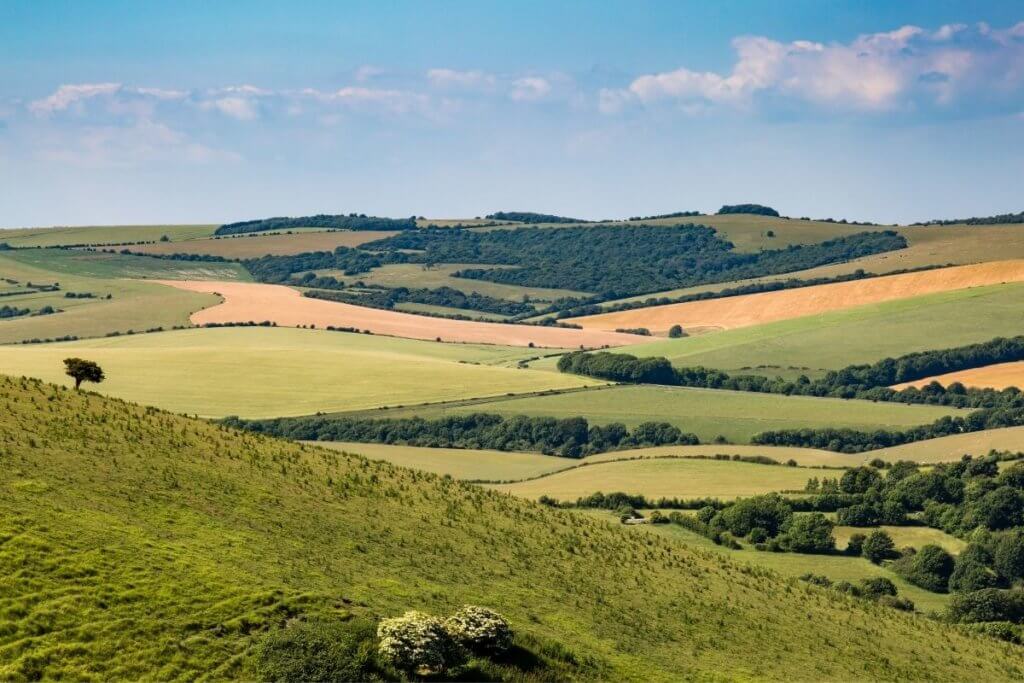
13. How much does it cost to walk the South Downs Way?
Camping and wild camping are the cheapest option for anyone wanting to walk the South Downs Way on a budget. You can also take your own food to save money, although if you can, save for at least one of the glorious pub stops along the way.
Staying in hotels and B&Bs will of course bump the prices up – expect to pay a minimum of £50 a room a night when you’re walking the South Downs Way. If you do decide to stay in hotels and B&Bs you’ll find you’ll walk a good amount more than the 100 miles listed above. Thanks to the terrain there’s not much accommodation on route, so you’ll have to walk out of your way to find it. Expect to walk an extra mile or even three to get to your hotel, and then back again, of course.
You don’t have to pay anything to walk on the actual trail though.
Walking the South Downs Way
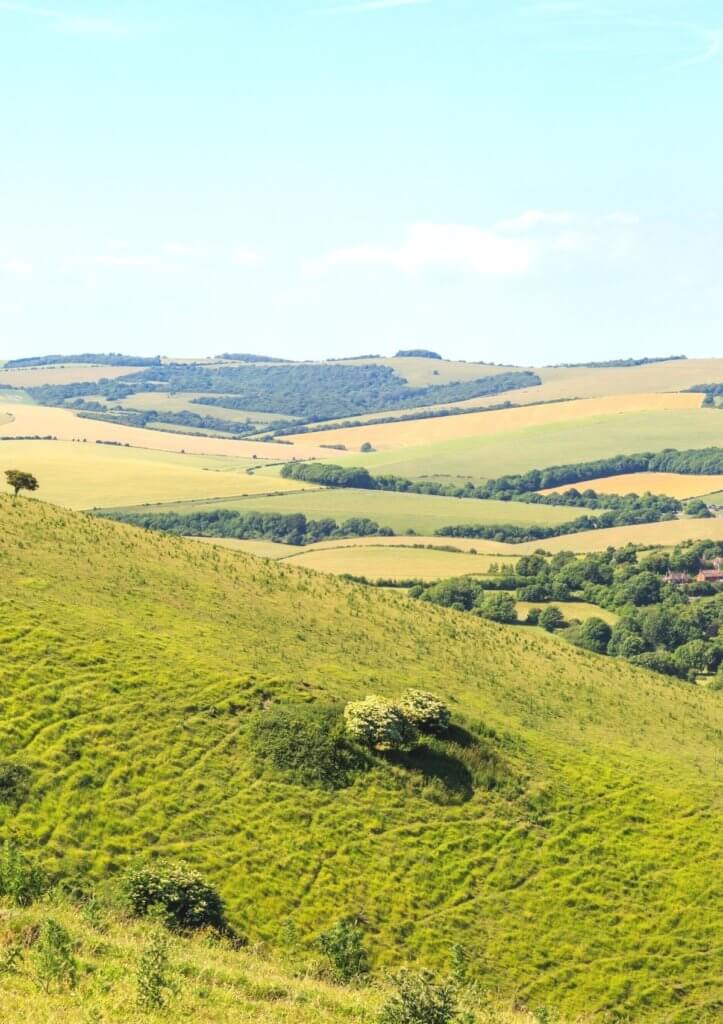
Planning to walk the South Downs Way takes some prep, but it’s totally worth it if you can carve the time out. The views, the stops, and the relative solace along the route mean you better get out there and explore before everyone else does!
- What Your Favourite Ice Lolly Says About You - 26 June 2025
- 3 Beautiful Proposal Locations in Hertfordshire - 15 June 2025
- Cost of Visiting England’s Tourist Attractions Soars up to 54% in Just 3 Years - 21 February 2025





